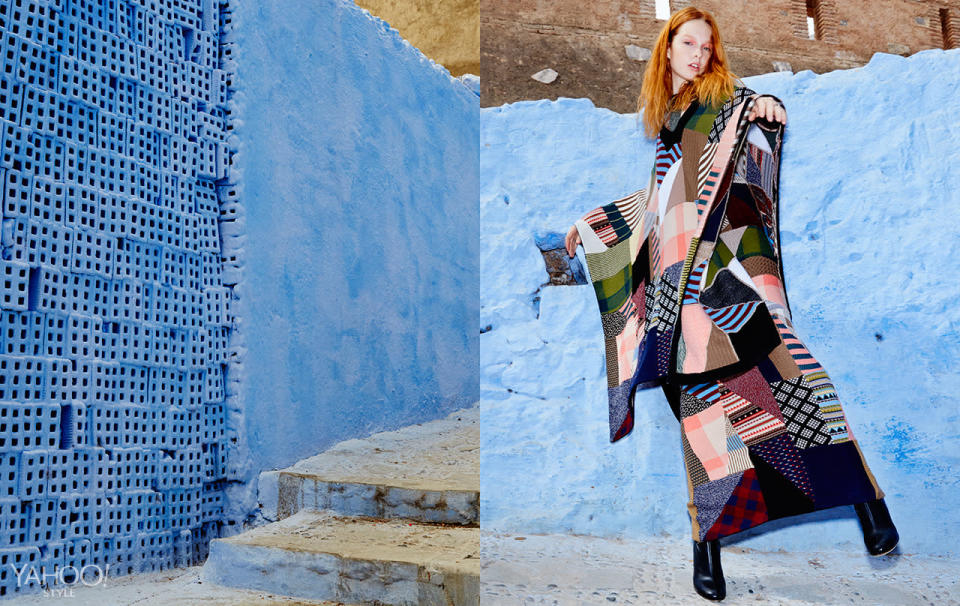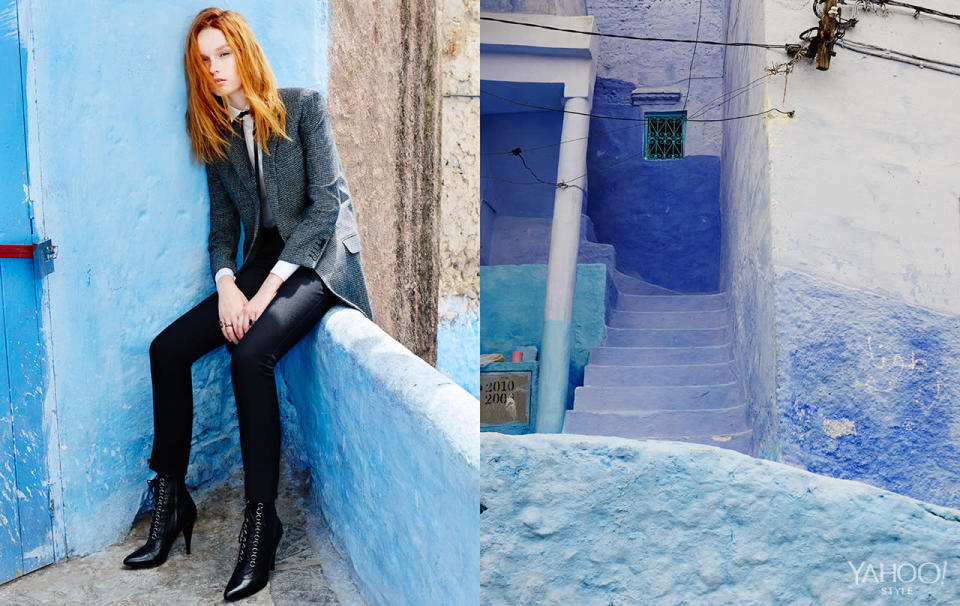Mad for Morocco: Why Designers From YSL to Tory Burch to Dries Van Noten Can’t Get Enough
Photography by Jerome Corpuz
Styling by Jaime Kay Waxman
Hair by Neil Grupp
Makeup by Georgi Sandev
Model Grace Simmons at Next Models
Production by Fred Fantun
From the moment Yves Saint Laurent first set foot in Marrakech in 1966, the fashion world has been mad for Morocco. The late Algerian-born designer famously carried on a lifelong love affair with the country and its style, spending downtime there with his partner Pierre Bergé and eventually purchasing the Jardin Majorelle in Marrakech, a vibrant blue villa and gardens that today hosts frequent pilgrimages from fashion insiders and exhibitions dedicated to local culture. Morocco’s lavish clothing and craft traditions repeatedly found their way into YSL’s influential collections through his interpretations of such silhouettes as the caftan, djellaba (a hooded outer layer), and harem pants, and details like Berber-inspired embroidery and jewelry. "But I wasn’t content with importing this culture,“ he explained in 1983. ”I annexed, transformed and adapted it.“
Since then, countless designers—from Valentino to Diane von Furstenberg— have been traveling (both literally and figuratively) to the country for inspiration. Each season inevitably brings new odes to the riotous patterns of Moroccan tile (Celine’s fall 2013 campaign used them as a background); the dramatically layered dress and tribal jewelry of the Berbers; the colorful alleyways of cities like blue Chefchaouen, pictured here; or the luxe-hippie look of the late socialite and style icon Talitha Getty, who epitomized jet-set Marrakech in the late ‘60s and a staple of Pinterest boards the world over. Some designers revisit the motif regularly: A Moroccan influence can be traced in Tory Burch’s signature elaborate patterns and caftan silhouettes, while Dries van Noten’s embroidery and prints evoke, if not always literally, the bohemian languor of a late afternoon in Fez. It makes sense, when you think about it, that an ancient culture blending influences from Europe, Africa, and Asia would be an enduring source of fascination in our postmodern melting pot of a world.
The fall collections were no exception. Most openly reverent was the Casblanca-born designer Alber Elbaz, who at Lanvin, showed tassels galore and dresses inspired by Moroccan wedding gowns, which are traditionally oversized so that they can be passed down through (and fit) multiple generations. Danielle Sherman of Edun, the LVMH-owned fair-trade brand, traveled through Morocco to find ideas and artisans, and showed traditional brocade with frayed edges and artisan-made silver jewelry alongside menswear-inspired tailoring in futuristic fabrics. In other collections, the Morocco vibe is less obvious, more a haute-boho mood. Chloé’s patchworked knits evoke a riot of rugs piled together in a souk; Valentino’s stripes carry faint echoes of black-and-white Berber blankets. And while some of the season-defining looks shown here—Saint Laurent’s insouciant rock-and-roll tailoring, Rodarte’s updated disco dress—may not specifically reference Morocco’s decorative arts, they seem like just the things for a globetrotting free spirit to pack for a holiday there. After all, Morocco—the glamour, the romance, the adventure—is also a state of mind.
Follow us on Instagram, Facebook, and Pinterest for nonstop inspiration delivered fresh to your feed, every day.








